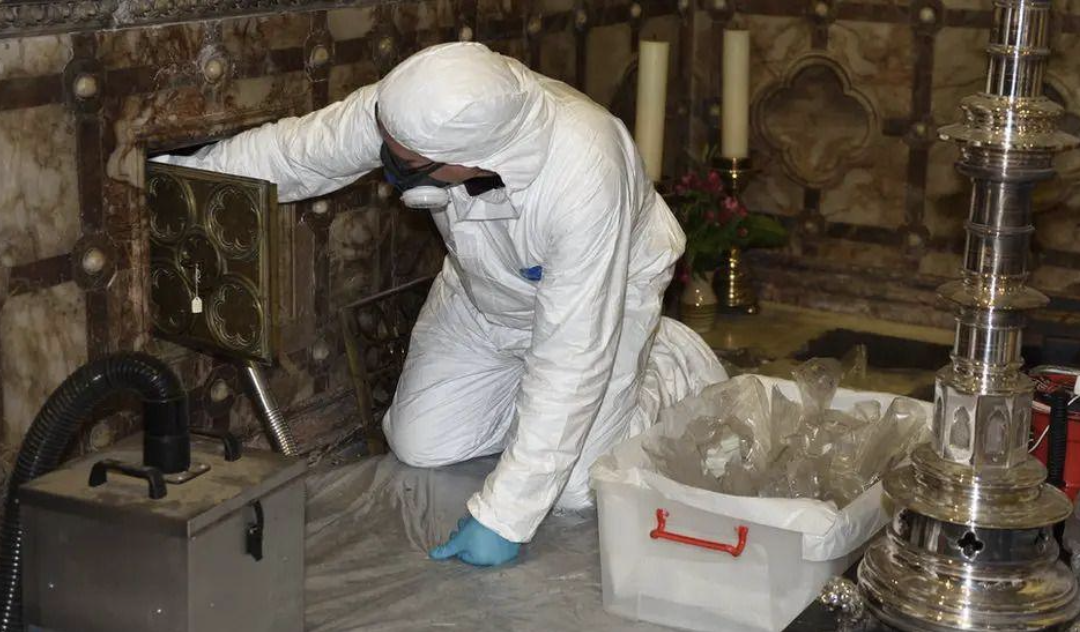(Image by Mark Hourahane)
Scientists removed the bones from the church wall in 2020 for carbon dating, and it was confirmed that they were those of St Eanswythe – one of the earliest English saints. The 7th century Anglo-Saxon princess, Saint Eanswythe, is believed to have founded one of the earliest monastic communities in England, and is granddaughter of Ethelbert, the first English king to convert to Christianity under Augustine.
The service closes a chapter of The Finding Eanswythe Project, initiated by Dr Lesley Hardy, Visiting Research Fellow at Canterbury Christ Church University and Dr Andrew Richardson at Isle Heritage (formerly Canterbury Archaeological Trust).
Dr Lesley Hardy commented on the historic event: ‘The survival of Eanswythe’s relics hidden from destruction at the time of the Reformation, is a testimony to centuries of faith and the persistence of belief and memory even in dark times,’ she said.
The relics would be contained within a specially designed reliquary box, and the church is one of the few in England to hold the remains of a patron saint.
Dr Ellie Williams, Reader in Archaeology, co-investigator and osteologist of Finding Eanswythe, spoke on the importance of the project:
It has been a privilege to lead the osteological study of Eanswythe’s relics, and to be part of this incredible multidisciplinary team, that has identified what is thought to be the earliest verified remains of an English Saint.
Together we have pieced together fragments of her story and brought to light a fuller biography of a young woman who achieved so much in her short life.
The translation of her relics marks the end of a chapter of the Finding Eanswythe Project, but it’s also just the beginning of a new afterlife for Folkestone’s patron saint, as we continue to celebrate and explore her life and legacy.
Finding Eanswythe is led by Canterbury Christ Church University and funded by the Heritage Lottery Fund, the De Haan Charitable Trust, Kent County Council, Folkestone Town Council, and the Rochester Bridge Trust
Reliquary design unveiled to house England’s earliest saint
St Mary and St Eanswythe church celebrated the festival of its patron Saint Eanswythe by unveiling the design for a reliquary to house her remains.
The church alongside the Diocese of Canterbury had held a competition to design the reliquary, with her remains previously being kept in a lead casket which had fallen into disrepair.
Artist Sophie Hacker was the winning designer, with her work drawing inspiration from ancient runes and the miracles associated with Eanswythe.

Talking about entering the competition, Sophie said:
I can’t imagine when the last opportunity to make a reliquary has actually been possible for an artist – it’s absolutely unique.
This is such a rare event, and I’m a practicing Christian myself, so I’m very drawn to anything that brings faith alive.
Speaking of the winning design, Dr Andrew said:
We got many fascinating, beautiful designs, but this just ticked all the boxes that we wanted. We think it’s respectful, it’s contemporary, but it also speaks strongly to the Anglo-Saxon period.
The translation took place on Sunday 17 November 2024 at St Mary and St Eanswythe Church.

